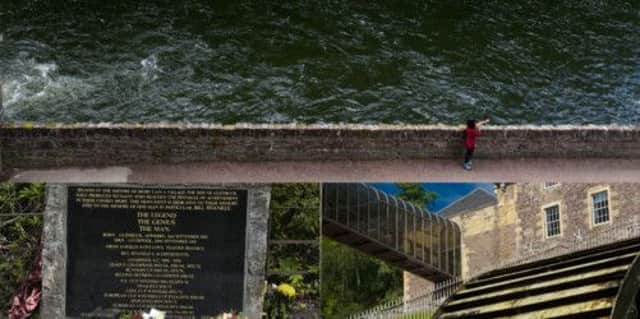100 Weeks of Scotland: New Lanark | Glenbuck


Week Forty Five
Years later, visiting New Lanark for the first time I was completely amazed by the place. If ever there is a reason to take school children on trips to understand history, then this is it. Even the approach is a complete surprise. As you drive through Lanark to this world heritage site I assumed I was roughly at sea level. I wasn’t. The steep, steep drop into New Lanark was totally unexpected. And then the buildings. They look as though they were constructed yesterday. And then the setting. A deep gorge on the banks of the River Clyde. Wonderful and wholly unexpected.
It is impossible to be in New Lanark without wondering what it was like in 1786 when David Dale had the vision for a revolutionary shift in working-practices. For all the advances and all the improved facilities for the workers it would still have been a hard and exhausting place to work. I wonder what the orphan children recruited to work the looms would have made of it now, as busloads of European tourists are ferried around the mills and wedding parties celebrate in the hotel.
Advertisement
Hide AdI thought of those long-gone workers often as I walked around. It was a lovely late summer’s day, There is a strong sense of what-has-gone-before about New Lanark.
New Lanark marked the first steps on the long road to workers’ rights.
One other image this week was taken on a trip to photograph the memorial to Bill Shankly, legendary manager of Liverpool FC, on the 100th anniversary of his birth. Hidden away in the now ghost village of Glenbuck, in it is a testament to what he achieved that many make the trip north from Liverpool to pay their respects.
I went in search of what was left of Glenbuck but sadly discovered that nothing remains – but for the memorial to Shankly, it is as if it had never existed. I met an old fisherman at Glenbuck Loch who showed me photographs of what the village once was. A hard Ayrshire mining town, yet one set in beautiful surroundings. ‘The railway passed over the middle of the loch on such a low embankment that when the mist was on the water it looked as though the trains were floating on the loch’ he told me. “All gone now though. The village, the railway the people. The bloody lot”. I left him with his memories as, in the fading light, he casted off once more.
• Alan McCredie began the ‘100 weeks of Scotland’ website in October last year, and it will conclude in Autumn 2014. McCredie’s goal is to chronicle two years of Scottish life in the run-up to the independence referendum.
McCredie says ‘one hundred weeks...’ is intended to show all sides of the country over the next two years. On the site, he says: “Whatever the result of the vote Scotland will be a different country afterward. These images will show a snapshot of the country in the run up to the referendum.
Advertisement
Hide Ad“The photos will be of all aspects of Scottish culture - politics, art, social issues, sport and anything else that catches the eye.”
Watch our slideshow of some of the photos from ‘one hundred weeks of scotland’ above, and follow the project at www.100weeksofscotland.com. You can also follow Alan on Twitter.
All pictures (c) Alan McCredie/ 100 weeks of Scotland